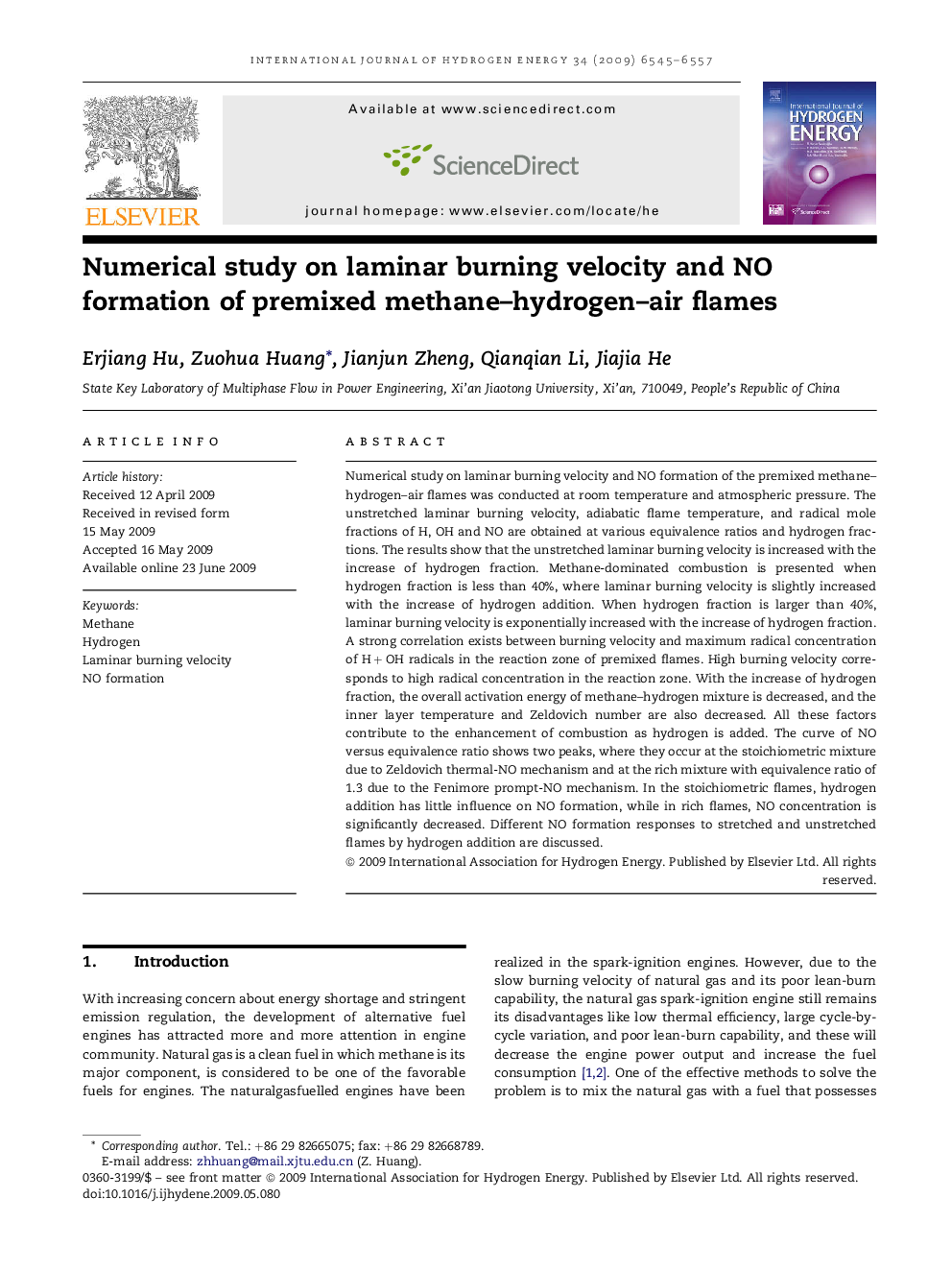| Article ID | Journal | Published Year | Pages | File Type |
|---|---|---|---|---|
| 1283168 | International Journal of Hydrogen Energy | 2009 | 13 Pages |
Numerical study on laminar burning velocity and NO formation of the premixed methane–hydrogen–air flames was conducted at room temperature and atmospheric pressure. The unstretched laminar burning velocity, adiabatic flame temperature, and radical mole fractions of H, OH and NO are obtained at various equivalence ratios and hydrogen fractions. The results show that the unstretched laminar burning velocity is increased with the increase of hydrogen fraction. Methane-dominated combustion is presented when hydrogen fraction is less than 40%, where laminar burning velocity is slightly increased with the increase of hydrogen addition. When hydrogen fraction is larger than 40%, laminar burning velocity is exponentially increased with the increase of hydrogen fraction. A strong correlation exists between burning velocity and maximum radical concentration of H + OH radicals in the reaction zone of premixed flames. High burning velocity corresponds to high radical concentration in the reaction zone. With the increase of hydrogen fraction, the overall activation energy of methane–hydrogen mixture is decreased, and the inner layer temperature and Zeldovich number are also decreased. All these factors contribute to the enhancement of combustion as hydrogen is added. The curve of NO versus equivalence ratio shows two peaks, where they occur at the stoichiometric mixture due to Zeldovich thermal-NO mechanism and at the rich mixture with equivalence ratio of 1.3 due to the Fenimore prompt-NO mechanism. In the stoichiometric flames, hydrogen addition has little influence on NO formation, while in rich flames, NO concentration is significantly decreased. Different NO formation responses to stretched and unstretched flames by hydrogen addition are discussed.
